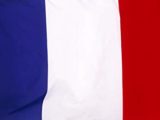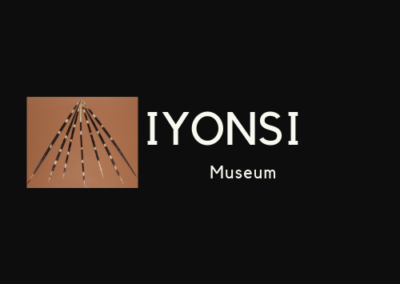
Ngondo Iyo Nsi, est Congolais né à Loubomo/ Dolisie. Il a travaillé pour l’Organisation Mondiale de la santé (OMS) sur le programme de l’éradication de la poliomyélite en Afrique. Il a aussi travaillé pour le Bureau des Nations Unies pour la coordination des affaires humanitaires (OCHA).
Il a créé et fondé la plateforme Iyonsi muséum. Actuellement Il est consultant des Nations Unies.
Depuis des décennies sont accrochés sur mon mur des tableaux de Méthode Ndayiheke, Mwimbi Mutsapi, Devos, Pierre Rene, H. Baumel, W. Kayo, Ruggieri, Egide Nshole, R. Useged, Milijanko Miholicic ; aussi des poteries Nso du nord -ouest du Cameroun, des instruments de musique divers, des masques jumeaux Fizi du sud Kivu, des masques Kebe Kebe Mbosi du Congo, une gravure sur bois de l’école d’art de Gitega au Burundi, des tapis Kuba de la république démocratique du Congo font partie de ma collection. Quelle est la finalité de ces objets accrochés dans un salon ou montés sur des supports si on les garde pour soi ?
La manifestation de mettre sur pied une plateforme visuelle et électronique s’est matérialisée par l’ouverture de cet espace. Ce lien est propice pour interagir et partager les œuvres en ligne.
Il n’est plus à démontrer que l’art Africain est surcoté par les commissaires-priseurs lors des ventes organisées en occident. Cet art négro-africain est une invention de l’ethnologie coloniale. L’art africain existe-t-il ? Oui c’est l’art des africains revu, corrigé, vendu et édité par les Blancs.[1]
Cependant les langues africaines désignent la statue par son nom d’origine. Nous l’appellerons Kiteki, ekeko, ou la représentation de la sculpture.
Si l’on remonte à l’histoire de l’Afrique dans les années 1880 ou 1900, par exemple, de nombreux récits relatent des exactions perpétrées sur les Africains par des missionnaires venus avec le cortège d’évangélisation des consciences à marche forcée. Avons-nous seulement mesuré l’impact sur les consciences des Africains de toutes les religions extérieures dans nos vies ?
Aucun travail de deuil n’a jamais été fait sur la perte spirituelle et comment la recouvrer. Des témoignages et des oracles disent que des bûchers avaient détruit des pans entiers de l’héritage culturel Africain partit à jamais en fumée. Irremplaçable, introuvable. Mais dit-on, l’ingéniosité des ancêtres, travaillant nuitamment pour substituer des faux à la place des masques vrais et sacrés avait permis de sauver plusieurs reliques. Ces restes de patrimoine culturel et cultuel avaient échappés au sabordage pour la protection du kimuntu.[2]
Nous leur rendons un hommage d’avoir protégé quelques trésors spirituels et la mystique des traditions séculaires ; auquel cas, nous aurions sombrés dans la folie collective. Sait-on fabriquer ces masques de nos jours ? Ou des instruments de musique tels le ngoma ou la sanza ? Quelle alliance se noue entre les vivants et ceux qui sont partis dans l’au-delà, comme le décrit, Sylvain Bemba[3] dans son roman.
Des mains anonymes avaient taillé les objets au couteau, apporté des scarifications sur les masques, marqueurs du clan. On y avait induit de la suie, de l’ocre, de la terre, le bois, avant le passage dans le feu purificateur, disent les oracles. Le forgeron était intervenu, dépouillant les scories et transformant le visage en forme humaine ou animale, représentation du défunt.
Les libations de vin de palme nourrissaient la terre, implorant la bonté de ceux qui sont partis pour la perfection de l’ouvrage. Luis Buñuel[4] avait utilisé la métaphore signifiante du rasoir qui tranchait l’œil, était une invitation faite au spectateur de voir différemment. Il en est aussi des masques qui méritent d’être vus autrement que par le prisme des critiques et marchands d’art en occident.
De nos jours, abattre un arbre est devenu sacrilège, la protection de l’environnement est féroce. Nos ancêtres avaient compris l’importance de la préservation de la terre, de l’eau, du feu et de l’air. Les quatre éléments vitaux étaient sollicités dans les séances secrètes auprès des forces visibles et/ou invisibles. C’est seulement si la réponse fût favorable que l’on procédât à l’abattage de l’arbre et pour les besoins de retirer l’écorce, siège de l’âme végétale.
En Occident, un vent de frémissement semble souffler pour la restitution des œuvres d’Afrique. Nous savons que les guerres ont toujours entraîné des spoliations d’objets, de trésors au détriment des vaincus. Le lien avec l’économie est évident pour les visiteurs qui fréquenteront désormais les musées en Afrique.
C’est pourquoi, l’initiative du programme de la route des chefferies au Cameroun est un début de promotion du tourisme culturel, afin d’amener les populations à se réapproprier leur patrimoine tout en contribuant au développement économique et social. C’est aussi le credo du gouvernement du Benin.
Avec les politiques des migrations drastiques en Europe, il sera impossible pour un Africain d’obtenir un visa pour visiter les musées de Tervuren, du quai Branly, Barbier Mueller, d’ethnologie de Genève, ou en Allemagne, etc.
Ces musées renferment la mémoire collective des Afriques, il est judicieux que ces arts retournent dans le berceau maternel de l’humanité.
Qui d’autre que l’Africain initié ou pas, parle la langue maternelle et puisse transmettre les connaissances cachées dans les replis de ces trésors. Aussi, Mfumu Kimbangu, dans son discours à Mbanza Sanda en 1921, avait vu juste sur « chaque groupe humain qui devrait se servir de la langue comme une alliance de communication. »
Nos différentes aires culturelles et linguistiques permettront d’approfondir la recherche de sens, déchiffrer les énigmes des masques Pongwe, Yoruba, Senoufo, Teke, Luba, Bambara, Dan, Shona, Kongo, etc.
Le professeur Ki-Zerbo abonde dans le même sens « qu’il y a mieux que de dormir sur la natte des autres. »
La plateforme servira d’échanges, afin que toute personne s’imprègne de ce sanctuaire pour l’élargir aux autres peuples de la terre. Ainsi les portraits et les masques à votre portée permettront d’être appréciés, comme une image nouvelle. Ils seront reproduits dans un musée physique en création au Congo[5] en participant à la donation.
© IYONSIMUSEUM
[1] Jean-Godefroy Bidima, l’art négro africain, Que sais-je ? Page 6.
[2] Dans la langue Kongo, la dignité, l’âme.
[3] Le soleil est parti à Mpemba.
[4] Le film, Un chien Andalou co-écrit avec Salvador Dali.
[5] Loubomo actuel Dolisie, environ 100.000 habitants. Troisième ville au centre de l’axe Brazzaville-Pointe-Noire.

Ngondo Iyo Nsi, is a Congolese national, born in Loubomo/ Dolisie. He has worked with WHO (World Health organization) for the global polio eradication initiative. And then with United Nations (OCHA), Office for the coordination of the humanitarian Affairs. He is CEO and founder of Iyonsimuseum platform. Consultant with the UN.
For decades, paintings by Method Ndayiheke, Mwimbi Mutsapi, Devos, Pierre Rene, H. Baumel, W. Kayo, Ruggieri, Egide Nshole, R. Useged, Milijanko Miholicic have been hanging on my wall. Also, as part of my collection are Nso pottery from north-west of Cameroon, various musical instruments, Fizi twin masks from South Kivu, Kebe Kebe Mbosi masks from Congo, and a wood engraving from the Gitega art school in Burundi, Kuba rugs from the Democratic Republic of the Congo. What is the purpose of these objects hung in a living room or mounted on supports if we keep them to ourselves?
The event to set up a visual and electronic platform materialized by the opening of this space. This link is ideal for interacting and sharing works online. It is no longer to show that African art is overvalued by the auctioneers during sales organized in the West. This Negro-African art is an invention of colonial ethnology. Does African art exist? Yes, it is the art of Africans reviewed, corrected, sold and edited by whites.[1]
However, African languages refer to the statue by its original name. We will call it Kiteki, ekeko, or the representation of sculpture.
If we go back to the history of Africa in the 1880s or 1900s, for example, many accounts do recount abuses perpetrated on Africans by missionaries who came with the ideology of the evangelization of consciences with forced march. Have we measured the impact of that evangelization bring by all external religions on the conscients of Africans and the impact in our lives?
No mourning work has ever been done on spiritual loss and how to recover it. Testimonies and oracles say that pyres had destroyed entire parts of the African cultural heritage that went up in smoke and forever. Irreplaceable, missing. But it is said, the ingenuity of the ancestors, working nightly to substitute the true and sacred masks with for fake ones instead, save several relics.
Through this the cultural and religious heritage escaped the attempt to destroy the protection of the kimuntu[2].
We pay homage to these brave men for having protected some spiritual treasures and the mysticism of secular traditions; in which case, we would have fallen into collective madness. Do we know to make these masks today? Or musical instruments such as ngoma or sanza?
What alliance is formed between the living and those who have gone beyond, as described by
Sylvain Bemba[3] in his novel.
Unknown sculptors’ hands cut objects with knives, made scarifications on the masks, markers of the clan. Soot, ocher, earth, wood, were inducted before crossing the passage into the purifying fire, say the oracles. The blacksmith intervened, stripping off the scorums and transforming the face into a human or animal form, a representation of the deceased.
Pouring palm wine to nourish the earth, imploring the goodness of those who have gone ahead for the perfection of the work. Luis Bunuel[4] use of the meaningful metaphor of the razor that cut the eye, was an invitation to the viewer to see differently. There are also masks that deserve to be seen other than through the prism of critics and art dealers in the West.
Nowadays, cutting down a tree has become sacrilege, the protection of the environment is fierce. Our ancestors understood the importance of preserving the earth, water, fire and air. The four vital elements were solicited in the secret sessions with visible and invisible forces. It is only if the answer is favorable that proceed to the felling of the tree and for the needs of removing the bark, seat of the vegetable soul.
In the West, a wind of change is blowing towards the restitution of the works of art of Africa. We know that wars have always resulted in spoliations of objects, of treasures to the detriment of the vanquished. The link with the economy is obvious to visitors who will now visit museums in Africa.
This is why the initiative of the “Chefferie Route Program” in Cameroon is a beginning to promote cultural tourism, in order to encourage people to reclaim their heritage while contributing to economic and social development. This is also the credo of the Benin government.
With the drastic migration policies in Europe, it will be impossible for an African to obtain a visa to visit the museums of Tervuren, Quai Branly, Barbier Mueller, Ethnology of Geneva, or Germany, etc.
These museums contain the collective memory of Africa, it is wise that these arts return to the maternal cradle of humanity.
Who else other than an initiated or non-initiated African speaks the mother tongue and can transmit the hidden knowledge in the folds of these treasures. Also, Mfumu Kimbangu, in his speech to Mbanza Sanda in 1921, had been right about “every human group should use language as a communication alliance”.
Our cultural and linguistic differences will deepen the search for meaning, de-encrypt the puzzles of Pongwe, Yoruba, Senufo, Teke, Luba, Bambara, Dan, Shona, Kongo masks.
Professor Ki- Zerbo said that « It is better to sleep on your own mat that of another person ».
The platform will serve as a corner for sharing information, so that everyone can open up to other peoples of the world and appreciate the portraits and masks. These will be reproduced in a physical museum in Congo[5] which is under construction with the help of those participating in the donation.
(©) IYONSIMUSEUM
[1] Jean-Godefroy Bidima, in the negro African art, Que sais-je? Page 6.
[2] In Kikongo beliefs means dignity, protection of soul.
[3] The sun went to Mpemba.
[4] A movy, An Andalou dog co-written with Salvador Dali.
[5] Loubomo town actual Dolisie is about 100.000 inhabitants. The third town of Congo which is in a center of Brazzaville the capital and Pointe Noire.
